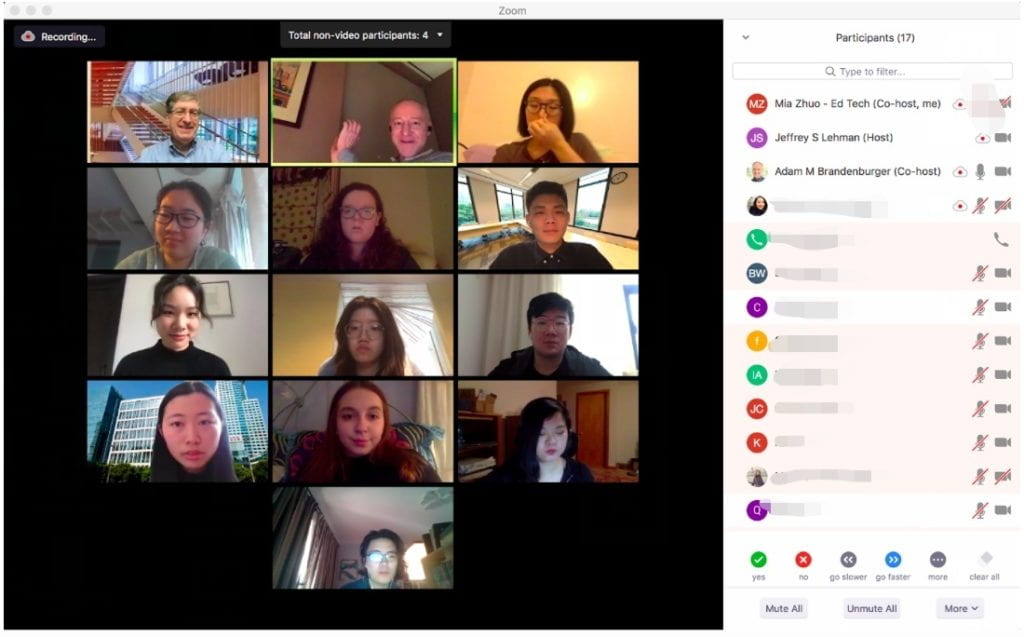Course: Creativity Considered
Instructors: Adam Brandenburger, Faculty Director of the Program on Creativity & Innovation and Jeff Lehman, Vice Chancellor of NYU Shanghai
Students Enrolled: 12
Technology Used: NYU Zoom, NYU Classes, Slack, Skype
Adam Brandenburger and Jeff Lehman designed their course, Creativity Considered, to be a collective journey on which students go to enhance their creative selves. To this end, the course involved extensive in-class discussion and one or more in-class exercises per session. Each session is two and a half hours long, with two mini-breaks during the class. It also includes student presentations supplemented with slides and commentary.
To move the course to digital instruction, Brandenburger and Lehman began by determining that, with students in China and the U.S., they could only maintain the feel of the in-person experience by teaching synchronously. So they decided to teach the course late in the evening in New York City 10:00 PM, with Lehman joining from Shanghai at 10 AM.

They chose Zoom as their platform, in large part because of the breakout rooms feature, where instructors are able to break students into small groups. Students engage in group or pair-work in the break-out rooms for in-depth conversation and activities such as conducting interviews with each other about their “creative DNAs,” and then report back to the rest of the class.
Brandenburger and Lehman also wanted to help build a learning community by keeping up a presence for the course throughout each week of study, so they set up a Slack group for the course. The instructors used slack as a “rapid-fire” channel during class sessions. For example, one exercise involved quickly picking out and sharing striking words from a reading. Brandenburger says this worked well in real-time. Students also post comments in a dedicated Slack thread for each session, and all participants are able to post reflections on the session and related articles following the class. In this way, Slack provides an ‘always-on’ digital classroom environment, while Zoom is reserved for synchronous sessions.
The instructors conduct their office hours via Skype and course materials were maintained, as usual, on NYU Classes. Overall, the priority has been to recreate a digital environment for discussion, which fits with the nature of the course — one where students gather to share and advance their efforts to understand their own creativity more deeply.
Challenges and Lessons Learned
Brandenburger says that one of the challenges in running sessions digitally is managing the flow of discussion so that students can build on one another’s comments. With Zoom, each participants able to see all of the other participants, which facilitates this process of dialogue building well.